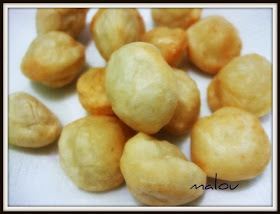The Health Benefits of Pineapple seem endless. You might know pineapple as a canned fruit that come in various slices. In reality, pineapple is a fruit composed of many flowers. The fruits of each flower circle around a single core; each fruit is characterized by a spiny part which we sometimes call as eyes.
Children from tropical countries know what a pineapple looks like. This is because the fruit grow best in humid climate and is readily available almost whole year round. For others, pineapple is just a simple canned fruit – or better yet a fruit shaped like Sponge Bob’s house.
One known Health Benefit of Pineapple is its ability to prevent scurvy. This fruit is rich in Vitamin C, but there is more to it than that.
Pineapples contain an important enzyme called bromelain. This enzyme has been found to be an effective anti-inflammatory compound that helps reduce swelling. It is also known to treat sore throat, arthritis, gout, and acute sinusitis.
Another Health Benefit of Pineapple is its ability to assist in digestion. It is more advisable to have pineapple in between meals to enable proper digestion that can lead to weight loss. If pineapple is eaten with any other food, it will first digest the food that was eaten with it, leaving a little effect on the other foods and proteins stored in the stomach.
Eliminating free radicals from our body is important. Pineapple, like berries is also high in anti-oxidants. This is responsible in protecting our cells from free-radical build-up that can lead to asthma, colon cancer, and rheumatoid arthritis.
Other Health Benefits of Pineapple include: Goiter prevention by regulating the thyroid gland; protects against bronchitis by removing the inflammation of the bronchial tubes; prevents high blood pressure; removes worms from the intestine; prevents dyspepsia from occurring.
Disease-Fighters From Fruits
Science has recently uncovered amazing cancer-fighting substances in fruits. These unique micro-substances are called phytochemicals, and were found to prevent diseases like colds, flu, and even cancer formation. Others can also help shrink tumors and malignancies.
Phytochemicals come in different forms, and can only be found in natural fruits and vegetables. Pineappled, for example, are rich in P-Coumaric and Chlorogenic Acid. And this is how these particular phytochemicals work:
* During digestion, our body naturally produces "amines" and "nitric acid". When these two unite, they form "nitrosamines", which may cause cancer.
* When we eat pineapples or drink 100% pineapple juice, we not only take in all their vitamins and minerals but also their naturally-occuring phytochemicals.
* These phytochemicals act like magnets that whisk away the "nitric acids" to prevent the harmful union with the "amines". This helps stop cancer before it even begins!
Courtesy of Panlasang Pinoy and Delmonte






